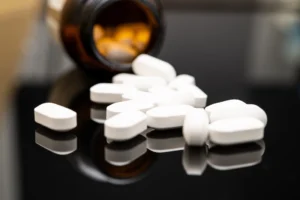If you are struggling with addiction, your treatment will start with detox to remove any remaining compounds and toxins from your body. During this process, most people experience symptoms that get progressively worse over several days and then start to decline. But sometimes those symptoms don’t decline, and they come back, rearing their ugly heads unexpectedly, weeks or months after your detox. Read on to learn more about post-acute withdrawal syndrome and how to treat this condition.
Withdrawal
When you stop using drugs or alcohol after you have been using them for a prolonged length of time, your chemical makeup has changed, and you’ll experience withdrawal symptoms. These can cause a great deal of discomfort and encourage you to revert to previous behaviors and use drugs again. Many symptoms mirror the flu and can include insomnia, anxiety, depression, muscle aches and pains, cramps, nausea, and vomiting.
Cravings
Cravings are some of the most common symptoms of withdrawal. The cravings you get during withdrawal are significantly worse than having a craving for your favorite food. The changes that drugs and alcohol make on the brain can make an individual feel like nothing else in the world matters more than getting access to drugs or alcohol, regardless of negative consequences.
Physical Withdrawal
Physical withdrawal symptoms happen when in withdrawal for nearly every type of drug and alcohol, and these can include:
- Insomnia
- Aches
- Muscle cramps
- Nausea
- Vomiting
- Diarrhea
Psychological Withdrawal
There are also several psychological withdrawal symptoms that people experience, including:
- Anger
- Anxiety
- Irritability
- Depression
- Problems concentrating
- Hallucinations
What is Post-Acute Withdrawal Syndrome?
Acute withdrawal is what happens soon after you stop taking drugs and alcohol. This is when you experience the symptoms listed above, like muscle aches, fatigue, and nausea, as well as irritability or anxiety.
Acute withdrawal will typically last an average of a few days to several weeks, and it’s considered the first stage of your detox process. Post-acute withdrawal syndrome, or PAWS, happens when these symptoms last longer than usual.
How to Treat Post-Acute Withdrawal Syndrome
If you start experiencing symptoms of post-acute withdrawal, you will benefit the most from getting proper treatment from a qualified drug and alcohol rehab center. The symptoms of post-acute withdrawal syndrome are severe enough that many people cannot quit on their own, and that is why having a professional treatment center to offer detox services and ongoing therapeutic support is so important.
When you go to a treatment center, they will help you cope with post-acute withdrawal syndrome by monitoring your symptoms and prescribing medication as necessary.
Monitoring
Monitoring your symptoms is essential because many substances can present with severe or life-threatening symptoms as part of acute withdrawal. Benzodiazepines and alcohol, for example, have serious life-threatening risks that need to be modulated with the right care.
Medications
When treating acute withdrawal, working with a qualified recovery center will give you access to the medication you need to stay as comfortable as possible during this process. Medical professionals can offer over-the-counter and prescription medications that they deem necessary based on what they monitor.
At any point during the several days or weeks of your detox, your medical team can change and administer different medications to help relieve or reduce the severity of post-acute withdrawal syndrome symptoms.
Get Help for Post-Acute Withdrawal Syndrome with Ava Recovery
At Ava Recovery, clients who undergo residential treatment and detox at our Austin drug and alcohol detox center can access several forms of treatment, including:
- Trauma-focused care
- DBT addiction treatment services
- Individualized treatment
- On-site equine therapy addiction treatment services
All four of these areas of treatment complement one another, with a focus on treating trauma as the main cause of addiction. Each client will have an opportunity to connect with themselves and understand that everything they do as an addict is done in order to meet their deepest needs, but there are other ways to meet those needs without being reliant on substance abuse.
With amenities like ice baths, a rec room, and a pool, our clients have the opportunity to tackle acute withdrawal syndrome and any other issues that might arise during recovery. We have a professional chef who makes delicious meals to support your nutritional needs for recovery.
Overall, post-acute withdrawal syndrome can present lingering withdrawal effects when you least expect them. The best way to tackle these symptoms is to get care at a top-tier residential facility with a focus on luxury amenities and comprehensive treatment.
Don’t wait to get help. Contact our drug rehab in Austin, Texas, today.







